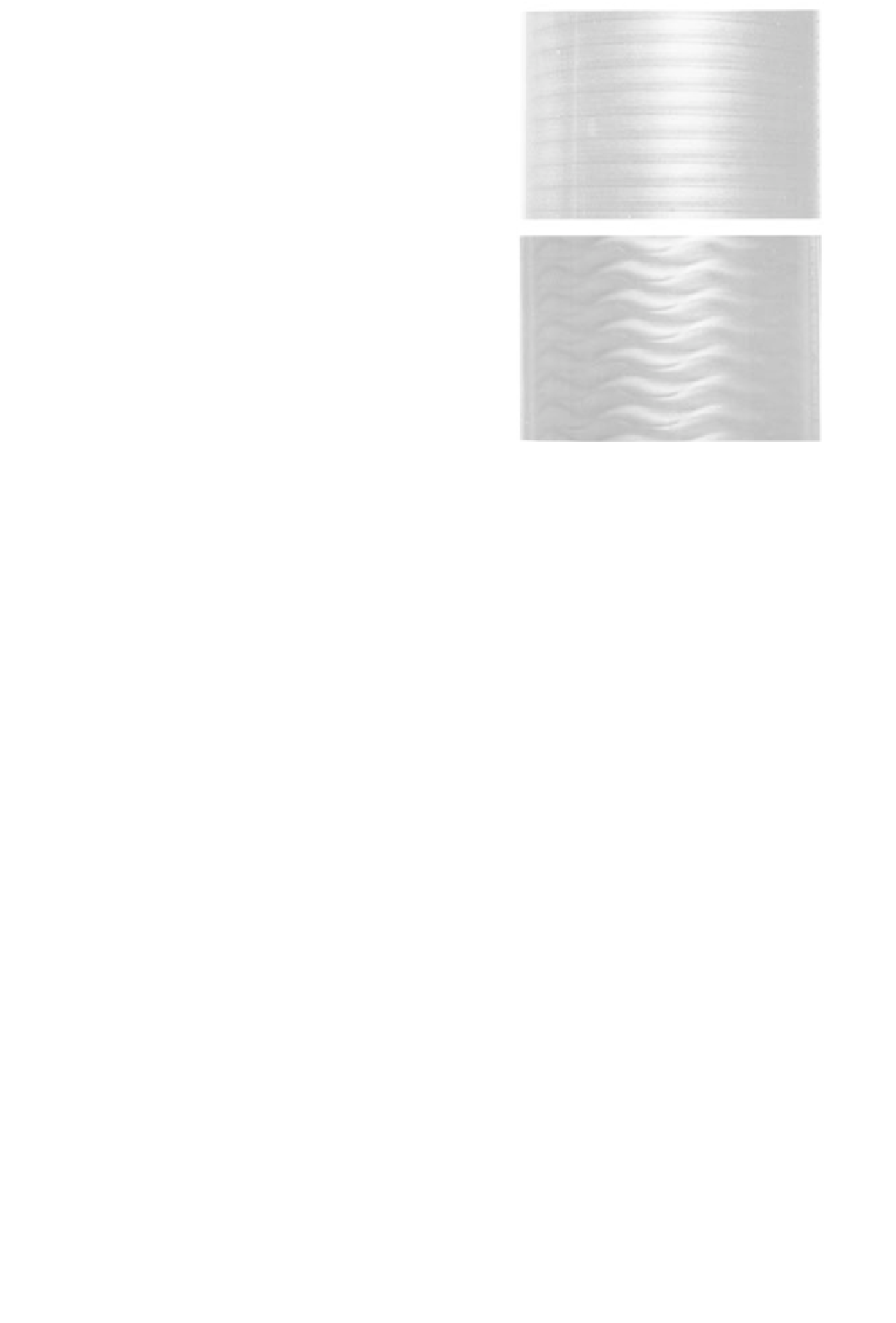Geoscience Reference
In-Depth Information
by earthquake motions or landslides; the water motion
generated in response to deformation of the solid bound-
ary propagate upward and radially outward to generate
very long wavelength (100s km) and long period (
(a)
60 s)
surface wave trains. By very long we mean that wavelength
is very much greater than the oceanic water depth and
hence the waves travel at tremendous speed, governed by
the shallow water wave equation . For example,
such a wave train in 3,000 m water depth gives wave
speeds of order 175 m s
1
or 630 km h
1
. Tsunami wave
height in deep-water is quite small, perhaps only a few
decimeters. The smooth, low, fast nature of the tsunami
wave means wave energy dissipation is very slow, causing
very long (could be global) runout from source. As in shal-
low water surface gravity waves at coasts, tsunami respond
to changes in water depth and so may curve on refraction
in shallow water. Accurate tsunami forecasting depends on
the water depth being very accurately known, for example,
in the oceans a wave may travel very rapidly over shallower
water on oceanic plateau. During run-up in shallow coastal
waters, tsunami wave energy must be conserved during
very rapid deceleration: the result is substantial vertical
amplification of the wave to heights of tens of meters.
c
gh
(b)
Fig. 4.53
Taylor vortices produced in Couette apparatus (a) Regularly-
spaced toroidal Taylor vortices and (b) Wavy Taylor vortices.
liquid of density,
, and a small
mass of neutrally buoyant and reflective tracer particles. As
the inner cylinder rotates it exerts a torque on the liquid in
the annular space, causing a boundary layer to be set up so
that the fluid closest to the outer wall rotates less rapidly
than that adjacent to the inner wall. At very low rates of
spin nothing remarkable happens but as the spin is
increased a number of regularly spaced zonal (toroidal)
rings, termed
Taylor cells
, form normal to the axis of the
cylinders (Fig. 4.53); then, at some critical spin rate these
begin to deform into wavy meridional vortices. These
begin to form at a critical inner cylinder rotational
Reynolds number,
Re
i
, and molecular viscosity,
4.9.9
Flow and waves in rotating fluids
We saw in Section 3.7 what happens in terms of radial cen-
tripetal and centrifugal forces when fluid is forced to turn
in a bend. In Section 3.8 we explored the consequences of
free flow over rotating spheres like the Earth when varia-
tions in vorticity create the Coriolis force which acts to
turn the path of any slow-moving atmospheric or oceanic
current loosely bound by friction (geostrophic flows). A
simple piece of kit to study the general nature of rotating
flows was constructed by Taylor in the 1920s, based upon
the
Couette apparatus
for determining fluid viscosity
between two coaxial rotating cylinders. This consisted of
two unequal-diameter coaxial cylinders, one set within the
other, the outer, larger cylinder is transparent and fixed
while the smaller, inner one of diameter
r
i
is rotated by an
electric motor at various angular speeds,
, of about 100-120, with
the 3D wave like instabilities beginning at
Re
i
r
i
d
/
130-140.
At high rates of spin the flow becomes turbulent, the 3D
wavy structure is suppressed and the Taylor ring structure
becomes dominant once more. Taylor cell vortex motions
involve separation of the flow into pairs of counter rotating
vortex cells.
. The annular
space, diameter
d
, between the cylinders is filled with
4.10
Transport by waves
4.10.1
Transport under shallow water surface gravity waves
oscillatory pattern of motion (Fig. 4.54). As the velocity of
this motion increases, sediment is put into similar motion.
Experiments reveal that once the threshold for motion is
passed then the sediment bed is molded into a pattern of
The previous sections made it clear that a sea or lake bed
under shallow water surface gravity waves is subject to an


Search WWH ::

Custom Search